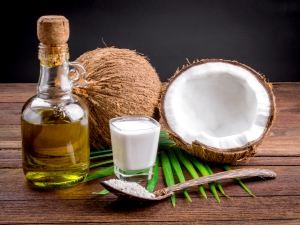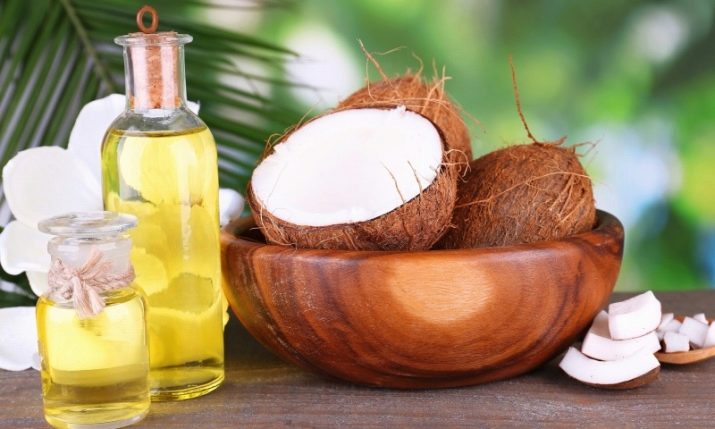Coconut and palm oil: properties and differences of products

In the modern world, various types of vegetable oils are becoming increasingly popular and widespread. Such products are used for cooking, as well as for cosmetic purposes.Coconut and palm oils are of particular interest to consumers. Despite the general delusion, these oils are completely different in terms of raw materials, composition, chemical and physical characteristics, as well as in appearance. We will talk more about these products and see what exactly their differences are, and if there are any similarities between them.
What is mined from?
So, we turn to a more detailed and integrated comparison of products. Palm oil is obtained in two ways:
- the product is extracted by squeezing from the seeds of oil palm (palm kernel method);
- the product is obtained by pressing the fruits of the same tree.
The second method of extraction is considered more efficient. This production is organized on a rather large scale and does not require large financial and material investments. According to researchers, about 50 tons of palm oil are produced per year.
At the same time, coconut oil is obtained from the ripened fruits of the coconut palm tree - coconuts. This product is produced in smaller quantities and is considered more expensive.
Difference
Coconut and palm oils differ in a number of indicators.
- Color and coloring. Coconut oil does not have a pronounced color. In liquid form, it is usually colorless, and when solidified it becomes white. Palm oil has a noticeable orange-red hue (this is due to the presence of carotenoids).
- Where does it apply? Coconut oil is an integral component of confectionery fat and a permanent companion to the cooking sphere (with its help they prepare various dishes). In addition, it can be found in the composition of dairy products that do not contain lactose, as well as nutrition, designed specifically for children. On the contrary, palm product is added to frozen convenience foods, fast food. Often, palm oil replace the natural creamy.
- Fat content. It is believed that coconut oil contains about 90% of saturated fatty acids. This indicator can contribute to the development of heart disease and vascular dysfunction. At the same time, the palm product is not able to cause such harm to the human body (due to the absence of such a large amount of acids).
- Useful components. It is widely known that palm extract contains large amounts of vitamin E, which is an antioxidant in nature. In coconut oil, vitamin E is less at times.
- Digestibility by the body. Due to the high content of lauric acid in the composition of coconut oil, this product is completely processed by the human body. About the palm product can not be said.
Similarities
Despite the many differences Coconut and palm oils have a number of similar properties.
- First, both products are obtained from plants belonging to the palm family.
- Secondly, both products are produced in tropical conditions in countries such as: Thailand, Malaysia, Indonesia.
- Third, these products begin to melt at temperatures above 25 degrees Celsius.
- Fourth, both products are poorly oxidized. This property provides a fairly long shelf life - about 2 years.
- Fifth, both palm and coconut oil have approximately equal number of kilocalories per 100 grams - about 120.
At the same time, carbohydrates and proteins are completely absent from the products.
Replacing coconut and palm products
It is known that coconut and palm oils are widely used for cooking food, however, there are other options that can be replaced with oil. So, for cooking it is recommended to use corn or avocado oil, soybean or sunflower, as well as olive or sesame. Moreover, olive and sesame products are considered the most useful (due to the presence of monounsaturated fats). remember, that Partly hydrogenated products should be feared. The fact is that in their composition there are fats that are in the trans configuration, which can increase the indicator of cholesterol in the blood.
Summing up, we should highlight the characteristic features. So, the positive side of coconut oil is the fact that it is quickly absorbed by the human body and does not increase blood cholesterol (however, its systematic use loads the body due to the presence in the composition of a large amount of saturated fat).
The palm product, on the contrary, is absorbed quite poorly, causing difficulties in the bowels and problems with the work of the gastrointestinal tract, but it consists of unsaturated fatty acids and essential vitamins that improve heart function and prevent cancer. It should also be remembered that both products are widely used in the food industry and cooking.
How to make coconut oil, see the next video.






















